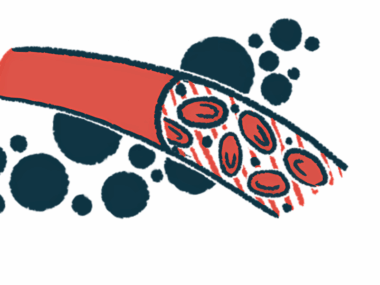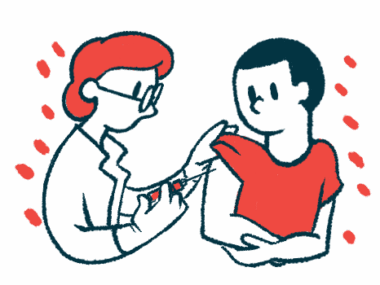In my life with NMOSD, wearing high heels is a symbol of resilience
Doctors said I'd never walk again, so I set out to prove them wrong
Written by |

The moment I slip into a pair of high heels, something shifts. Not only do heels lengthen my legs, but they also boost my confidence, improve my posture, and give me a sense of power.
It’s not just about fashion, but also what I associate with high heels: the ability to exude glamor, turn heads, and dominate the corporate world. I’m 5 feet, 2 inches tall, and when I’m with my 6-foot-5-inch husband, heels provide the lift I need to feel more confident on date nights.
But over the past decade, my high heels have spent more time in the back of my closet than on my feet. Part of this change stems from life after the pandemic, as many of us now work from home. Plus, sneakers have become acceptable and even celebrated in the corporate world. As dress codes relax, opting for comfort over stilettos feels easier and smarter.
Meanwhile, my once-prized collection of designer pumps has begun to collect dust. Their only moments of glory are when my daughter pulls them out. At 13 years old, she’s almost my height and frequently checks if she can fit into my heels. Recently, she’s started wearing a few of my tighter pairs, and her jubilant squeals echo throughout our home.
With a fashion event on the horizon, I feel the urge to wear my heels again. However, my excitement is tempered by hesitation. Living with neuromyelitis optica spectrum disorder (NMOSD) has altered my relationship with my body. I’ve gained weight, which increases the pressure on my feet. My balance isn’t what it used to be, and I know my spine will ache if I spend too much time in heels.
My inability to wear high heels feels almost traumatic, because to me, it symbolizes defeat.
Finding a different type of balance
When I suffered my first NMOSD attack, a brutal episode of transverse myelitis left my doctors puzzled as to the cause, and they were convinced I’d never walk again. Yet I refused to accept that fate. I imagined myself walking again, not just in flats or sneakers, but in heels. I held on to that image for months, and eventually, it became reality.
That’s another reason why high heels mean more to me than just good fashion. They symbolize resilience, strength, and reclaiming something I was told I’d lose forever. So, even if the choice is practical, my soul panics a little when I’m not wearing them. It feels like a piece of that hard-won victory is slipping away, like I’m letting NMOSD reclaim the ground I fought so fiercely to gain.
As I stand in my closet weighing the pros and cons of putting on my favorite pair of leopard-print heels, I grapple with a decision. What should take precedence: my pride and mental health, or my body and its physical limitations? Logic tells me I should be grateful that I’m still walking, throw on a pair of sneakers, and move on with life. Yet deep down, I yearn for space to embrace more than just practicality. I want to look good, have fun, and find joy without compromise.
This is when NMOSD feels most unjust, and in these moments, I curse this disease. When my family asks, “Still trying to decide what to wear?” I feel especially lonely. How can I explain that behind my hesitation lies a deeply emotional debate about much more than simply choosing which pair of shoes to wear?
Perhaps the answer isn’t to always wear either heels or sneakers. Maybe the real power comes from permitting myself to choose differently each time, without guilt. Some days my body will demand comfort, and I’ll honor that. Other days, I’ll find the strength to slip on those leopard-print heels and remind myself that I’ve already defied the odds — several times.
Ultimately, it’s not just about what’s on my feet; it’s about moving forward on my own terms.
Note: Neuromyelitis News is strictly a news and information website about the disease. It does not provide medical advice, diagnosis, or treatment. This content is not intended to be a substitute for professional medical advice, diagnosis, or treatment. Always seek the advice of your physician or other qualified health providers with any questions you may have regarding a medical condition. Never disregard professional medical advice or delay in seeking it because of something you have read on this website. The opinions expressed in this column are not those of Neuromyelitis News or its parent company, Bionews, and are intended to spark discussion about issues pertaining to neuromyelitis optica spectrum disorder.







Leave a comment
Fill in the required fields to post. Your email address will not be published.